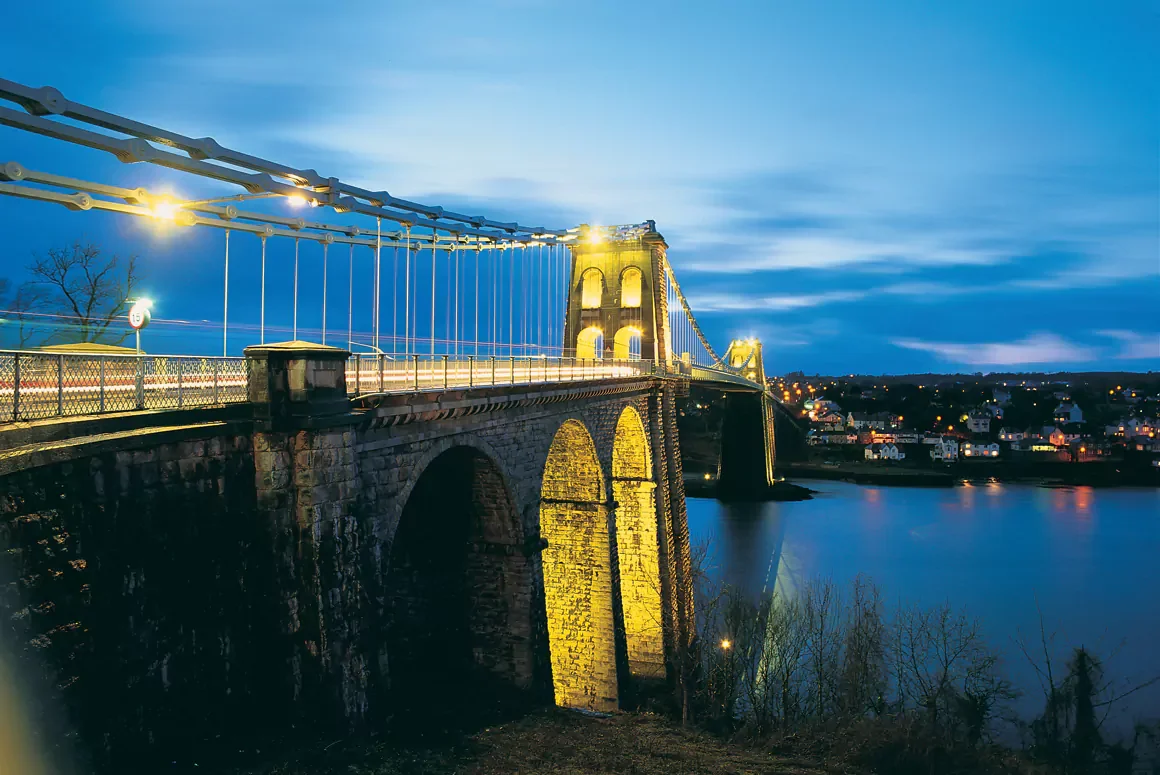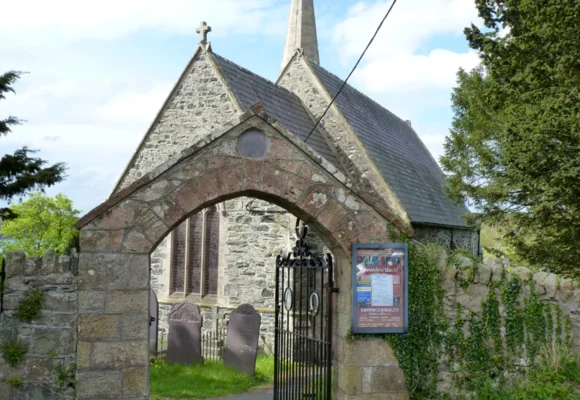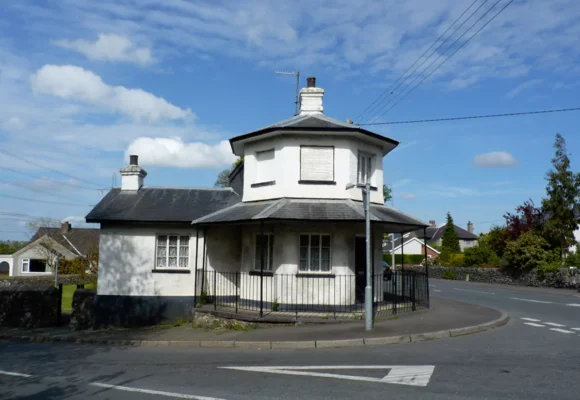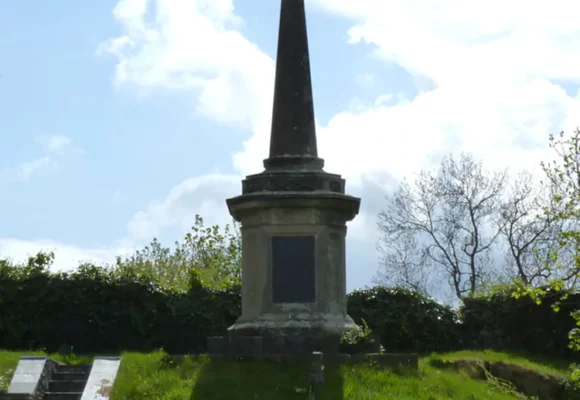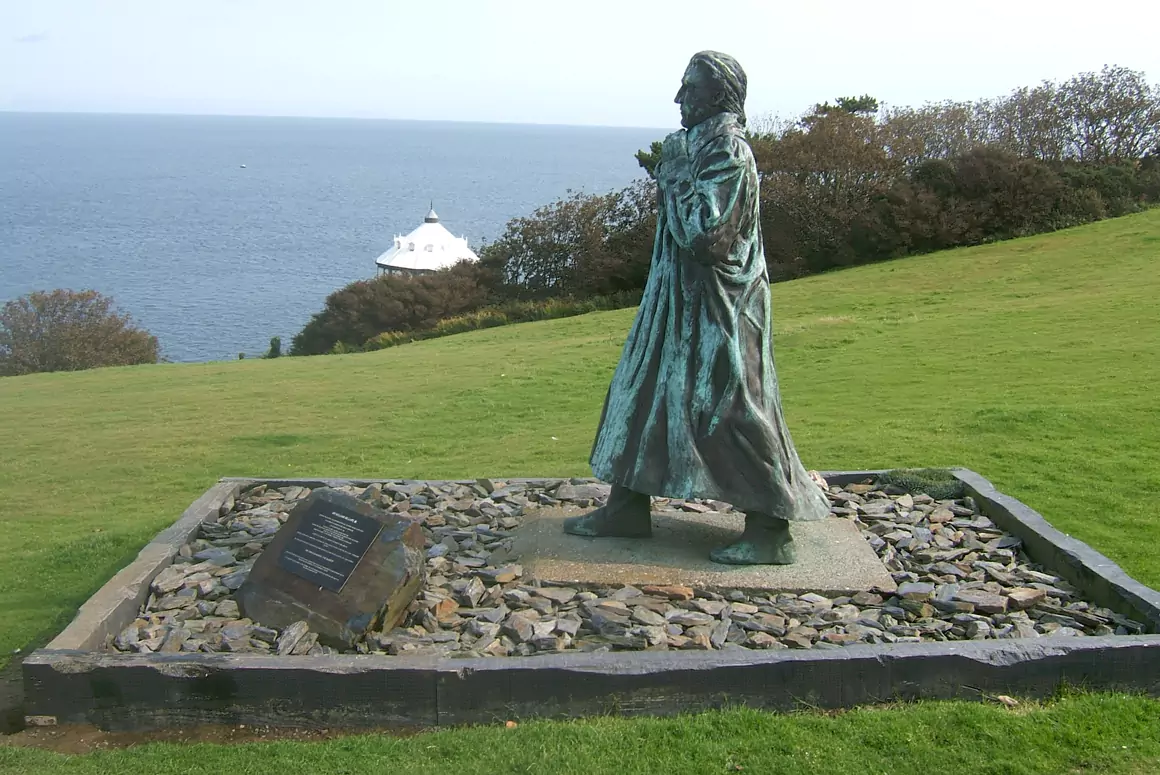![]()
Britain is an island surrounded by islands, so Karen Foy sets off to one of these ‘outposts’ to discover, amongst other things, the story behind a village which is ‘alphabetically challenged’.
Separated from the Welsh mainland by the Menai Straits, the isle of Anglesey boasts spectacular scenery and wildlife, but it has another ‘claim to fame’ as the home of the longest-named village in Britain.
Llanfairpwllgwyngyllgogerychwyrndrobwllllantysiliogogogoch – often shortened to Llanfairpwll – has been inhabited for centuries. Originally a small rural settlement, it began to see major changes with the arrival of the Railways in the early 1850s. Divided into the Lower Village (Pentre Isaf) and the Upper Village (Pentre Uchaf), it became a commercial community with shopkeepers, schools, public houses and a post office, which could all serve the surrounding agricultural areas.
Originally known as Llanfair Pwllgwyngyll – meaning ‘The Mary Church by the pool near the White Hazels’ – the extended name is said to have been invented by a local cobbler in the 19th century to encourage tourists and boost commerce – its popularity with visitors today is testament that the plan definitely worked! Notwithstanding this act of shrewd business acumen, Llanfairpwll is surrounded by constructions and buildings which have made their mark in history and are attractions in their own right.
- St Marys Church Lychgate
- Toll House
Bridging the Gap…
In 1811, to help improve communication and trade between London and Ireland, engineer, Thomas Telford, proposed a plan to Parliament to build a road between London and the Anglesey port of Holyhead. The most difficult aspects of this route were overcome with the construction of two bridges in Wales: one in Conwy, and the second within sight of Llanfairpwll (the Menai Suspension Bridge).
In order to provide a smooth transition between Anglesey and the mainland, the bridge had to span the Menai Straits – and be tall enough to allow 100ft sailing ships to pass underneath at high tide – which was achieved by building supporting concrete towers on either side. The limestone used to construct the arches was mined from nearby quarries at Penmon and carried to the site by boat. Sixteen chain cables, each made from 935 iron bars, were supplied by Hazeldean’s Foundry near Shrewsbury, and had to be soaked in linseed oil to prevent them from rusting.
Although the stonework was finished by 1824 the raising of the chains took considerably longer, and as they were hoisted into position a pipe-and-drum band played to encourage the 150 workers to complete their task. Finally, on 30th January 1826 the bridge was opened to the public, reducing the thirty-six hour journey from London to Holyhead by nine hours.
As a means of recouping some of the money spent on the project, Telford built toll houses where travellers paid a fee for crossing the bridge. Erected at five-mile intervals between the bridge and Holyhead, these octagonal buildings are still visible today with the example at Llanfairpwll being one of only three toll houses left along the A5 route.
In order to provide a smooth transition between Anglesey and the mainland,
the bridge had to span the Menai Straits
This pretty black and white house still has the original table of tolls on the outside wall, tolls last charged here in 1895: for every horse, mule, or oxen, drawing a coach or carriage with springs, you would have been expected to pay 4d (four old pennies); whilst, for an animal not pulling a carriage, wagon or cart, the toll would have been reduced to 1d. Even the drovers of oxen, pigs, sheep and cattle were expected to pay for crossing on foot.
The success of the suspension bridge improved road travel but it wasn’t long before the people of Llanfairpwll were witnessing the creation of another structure across the Menai Straits. Robert Stephenson – son of locomotive engineer George Stephenson – was commissioned to build a tubular bridge that could carry the heavy weight of the increasingly popular train transport and their carriages. Hydraulic pumps lifted the tubes into place – tubes supported on stone columns – but the task was an arduous one. John Thomas, a stonemason who had worked on the Houses of Parliament and Buckingham Palace, was employed to create four magnificent, four metre high, limestone lions, which were added to plinths of the same height to decorate the entrances to the bridge. Named the Britannia Bridge – due to the fact that a column on the Bangor-side was built on a small island known as the Britannia Rock – this feat of engineering finally opened on the 5th March 1850.
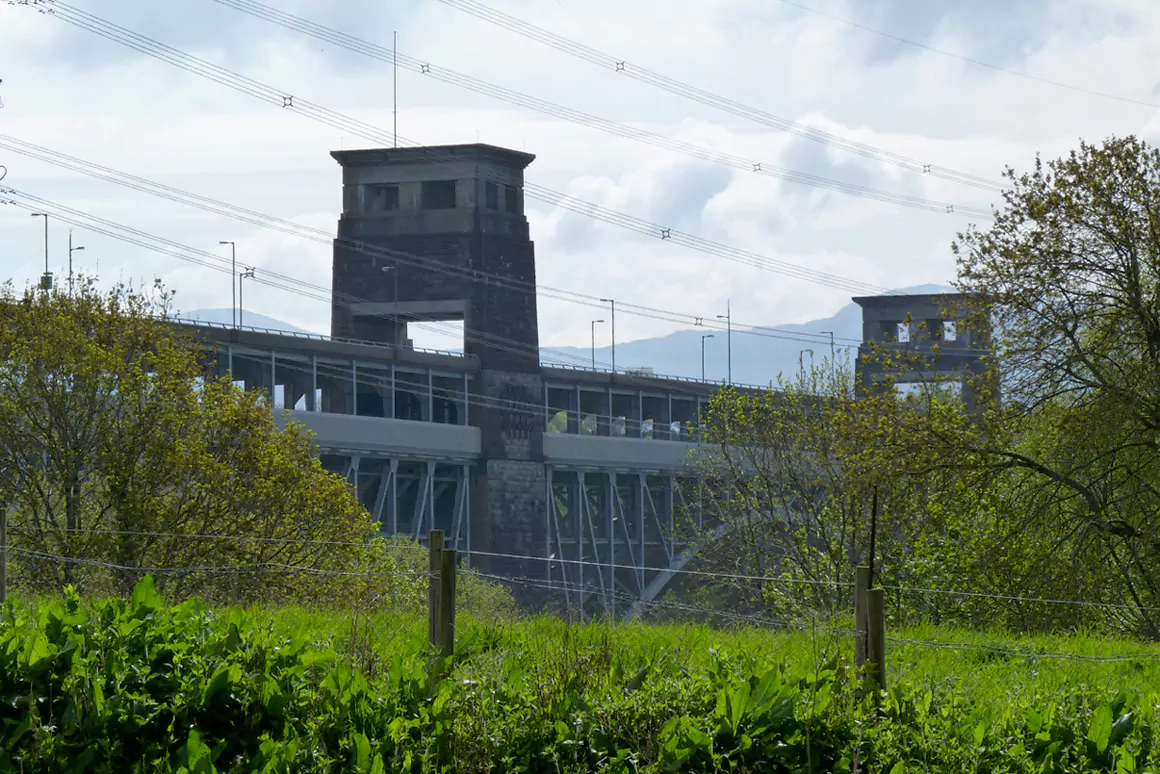
A Lasting Memorial…
Within the shadow of the bridge lies the church of St Mary’s, and although this present structure was completed in 1853, a religious building has been on this site for centuries. The setting is idyllic with entry through an impressive lychgate, whilst inside the church elaborate stained glass windows are dedicated to the first Marquess of Anglesey and other local dignitaries. Perhaps most moving is the large memorial, erected at the top of the churchyard, to those who lost their lives during the construction (and later reconstruction) of the Britannia Bridge: twenty names are inscribed to commemorate the ultimate price they paid for the work they carried out.
If you follow the little winding footpath through the churchyard you will soon arrive at the banks of the Menai Straits. Here in this somewhat remote location is a statue of Vice-Admiral Horatio Nelson. The statue was created by Admiral Lord Paget, former Commander of the Mediterranean Fleet, to commemorate Nelson’s life and naval achievements. Nelson fell at the Battle of Trafalgar in 1805 but, today, he continues to ‘watch over’ sailors as his fifty-foot memorial is an essential navigational aid in this treacherous stretch of water. On the front of the plinth he is aptly quoted with the words, ‘England expects that every man will do his duty.’
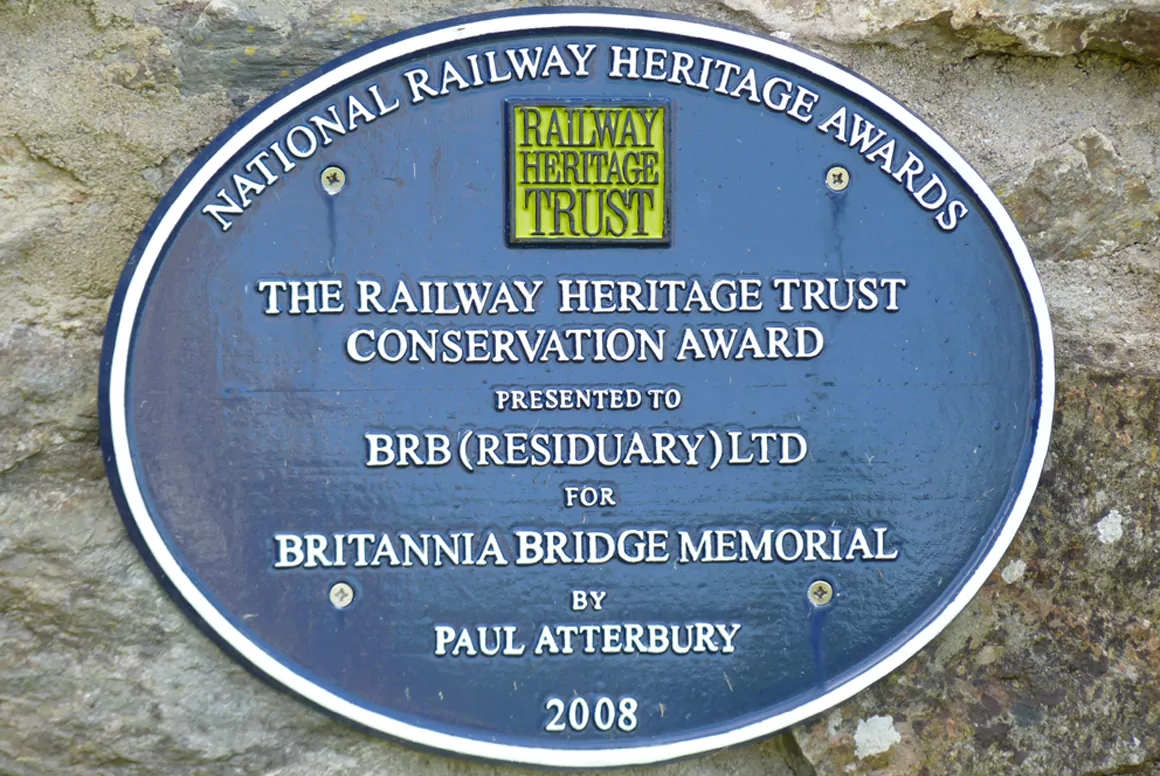
A New Era…
Continuing to evolve, new life was breathed into the Llanfairpwll community during the 20th century. Erected in 1921, the corrugated-iron building on the main road into the village became the meeting place of the Women’s Institute (WI). It is not widely known, but the first ever WI gathering took place in 1915 inside a house only yards from this building, and from Llanfairpwll the movement – originally from Canada – spread throughout Britain.
Although there are constant reminders of the area’s past, one of the most popular local tourist attractions is the James Pringle Weavers Visitors’ Centre, drawing thousands of people every year from destinations around the globe. Shops and units within the centre are stocked with everything from ceramics and clothing to Welsh crafts and jewellery. The large café and restaurant enable weary shoppers and history hunters (who have come to see the village and railway station with the longest name) to rest their feet and enjoy the refreshments on offer. So why not sample a little bit of island life and join them at this history lovers ‘hot spot’ where you’re guaranteed a great day out!
- Britainnia Memorial
- Nelson Statue
Did You Know?
- Lewis Carroll mentioned the Menai Suspension Bridge in his classic children’s novel – Through the Looking-Glass, and What Alice Found There (1871). White Knight says to Alice:
“I heard him then, for I had just
Completed my design
To keep the Menai bridge from rust
By boiling it in wine.”
- Even the lions carved to decorate the entrance to the Britannia Bridge were captured in the lines of a poem by Welsh bard, John Evans (1826-1888) who was born in nearby Porthaethwy.
Pedwar llew tew heb ddim blew
Dau ‘rochr yma a dau ‘rochr drew
“Four fat lions without any hair
Two on this side and two over there.”
Words: Karen Foy
Images: unless stated, Karen Foy
Feature image: ‘Menai Bridge’ Crown Copyright (2010) Visit Wales
First published: Welsh Country Magazine Sept-Oct 10


